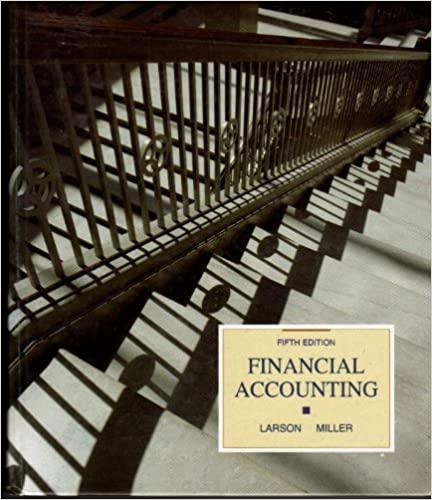Sticks Company and Stones Company are similar businesses that sell competing products. Both companies began operations five
Question:
Sticks Company and Stones Company are similar businesses that sell competing products. Both companies began operations five years ago and are up for sale. Branch Company is considering both Sticks and Stones with the prospect of buying one of them.
In evaluating the two companies, the management of Branch has observed that Sticks Company has reported an average annual net income of \(\$ 142,020\). Stones Company, on the other hand, has reported an average of \(\$ 171,000\). However, the companies have not used the same accounting procedures and Branch Company management is concerned that the numbers are not comparable. The current balance sheets of the two companies show these items:

Sticks Company has used the allowance method in accounting for bad debts and has added to its allowance each year an amount equal to \(1 \%\) of sales. However, this seems excessive since an examination shows that only \(\$ 18,000\) of its accounts are probably uncollectible. Stones Company has used the direct write-off method but has been slow to write off bad debts. An examination of its accounts shows \(\$ 36,000\) of accounts that are probably uncollectible.
During the past five years, Sticks Company has priced its inventories on a LIFO basis with the result that its current inventory appears on its balance sheet at an amount that is \(\$ 144,000\) below replacement cost. Stones Company has used FIFO, and its ending inventory appears at approximately its replacement cost.
Both companies have assumed eight-year lives and no salvage value in depreciating equipment; however, Sticks Company has used sum-of-the-years'-digits depreciation, while Stones Company has used straight line. The management of Branch Company is of the opinion that straight-line depreciation has resulted in Stones Company's equipment appearing on its balance sheet at approximately its fair market value and that straight-line would have had the same result for Sticks Company.
Branch Company is willing to pay what its management considers fair market value for the assets of either business, not including cash, but including goodwill measured at four times average annual earnings in excess of \(15 \%\) on the fair market value of the net tangible assets. Branch Company's management defines net tangible assets as all assets other than goodwill, including accounts receivable, minus liabilities. Branch Company will also assume the liabilities of the purchased business, paying its owner the difference between total assets purchased and the liabilities assumed.
\section*{Required}
Prepare the following schedules:
(a) a schedule showing the net tangible assets of each company at their fair market values according to Branch Company management,
(b) a schedule showing the revised net incomes of the companies based on FIFO inventories and straight-line depreciation,
(c) a schedule showing the calculation of each company's goodwill, and
(d) a schedule showing the amount Branch Company would pay for each business.
Provocative Problem 9-5 Metro Airlines, Inc.
(L.O. 2, 6)
Step by Step Answer:






